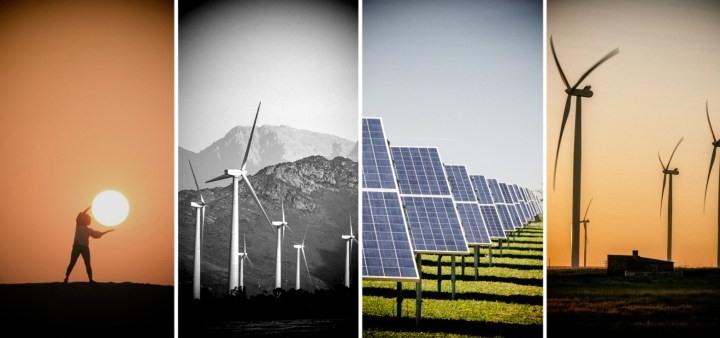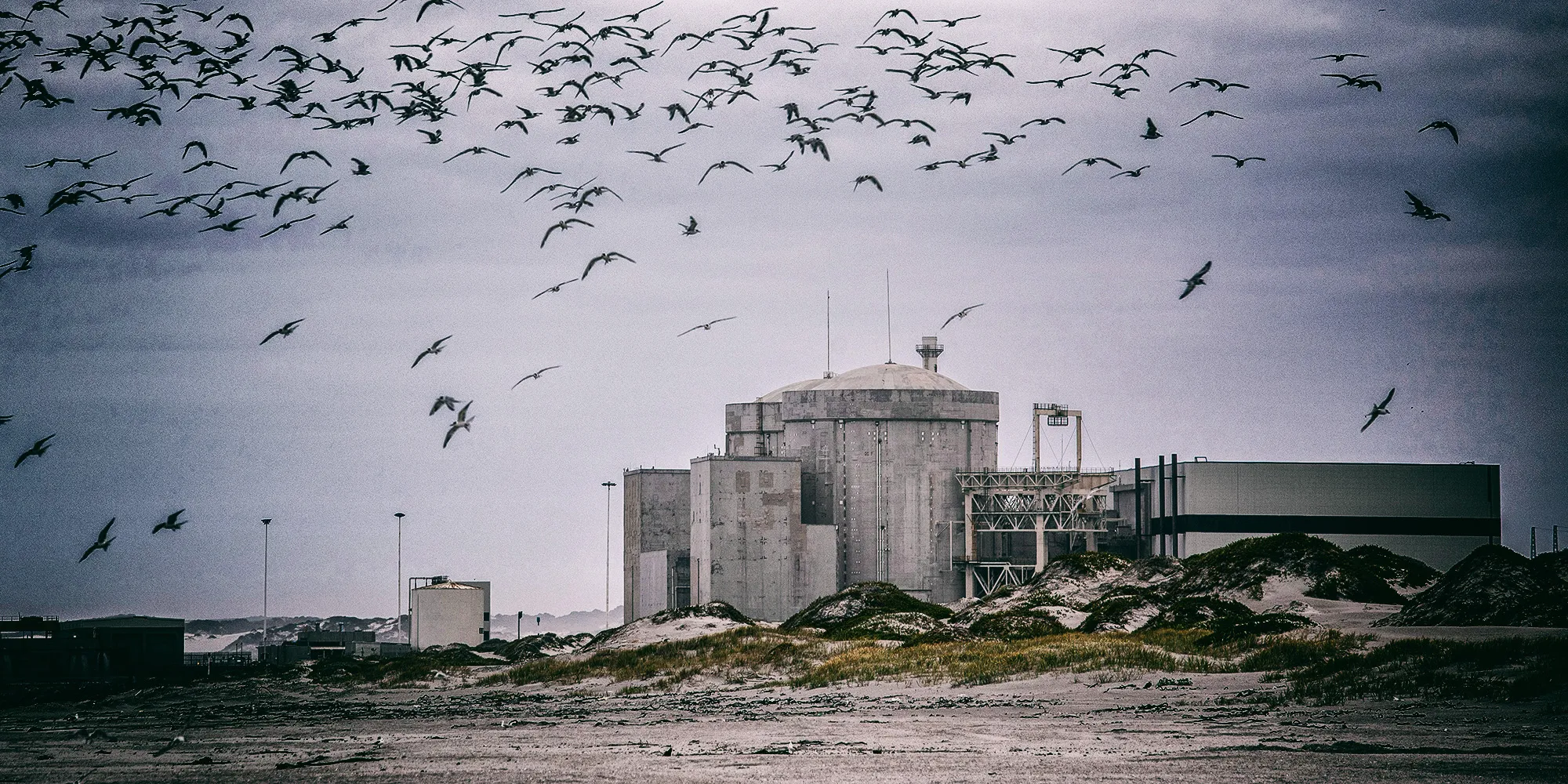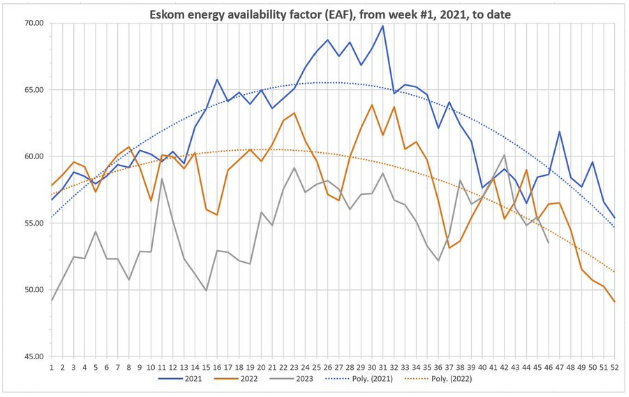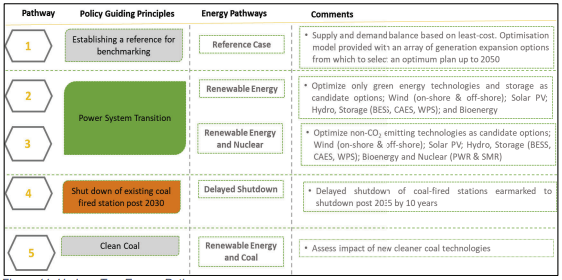HELLO DARKNESS
Government’s Integrated Resource Plan acknowledges rolling blackouts will be with SA for years

The Department of Mineral Resources and Energy has finally gazetted the latest Integrated Resource Plan, four years after its predecessor, which says South Africa won’t have uninterrupted power until at least 2030. It also believes nuclear power is one of six solutions to the energy crisis.
Despite assurances made by ANC treasurer-general Fikile Mbalula on eNCA in May 2023 that rolling blackouts would be a thing of the past by the end of the year, the government’s latest draft energy plan shows that load shedding will be part of South Africa’s future until the end of the decade at least.
ANC SG Fikile Mbalula says loadshedding will be reversed by the end of 2023
“The load shedding before the end of the year should have been something of the past” @MbalulaFikile
He was speaking to JJ Tabane on @PowerToTruth_
Source : @eNCA pic.twitter.com/dpizLzoKNp— News Live SA (@newslivesa) May 18, 2023
The latest Integrated Resource Plan (IRP), gazetted on 4 January by Mineral Resources and Energy Minister Gwede Mantashe, reveals that power supply will be constrained for the next six years due to an “electricity supply gap”, despite efforts to add new supply to the grid.
The review considered two time “horizons”: The first, up to 2030, focuses on addressing current generation capacity constraints and what the system requires to close the electricity supply shortage gap.
The second time frame covers the period from 2031 to 2050, mainly focusing on six long-term electricity pathways to guide policies which will be defined by a diversified mix of coal, nuclear, gas, hydro, storage technologies and hydrogen. This must begin “in earnest”, it noted.
Nuclear power, the plan acknowledges, is an important clean energy source of electricity generation because it can complement other clean energy technologies in reducing power sector emissions, while also contributing to electricity security as a dispatchable power source.
“There is growing global interest in the deployment of small modular reactors (SMRs). Given their smaller footprint, SMRs can be sited in locations not suitable for larger nuclear power plants, such as inland regions, along the coast and in remote areas.
“The flexibility of SMRs enables potential for hybrid energy systems that combine nuclear and alternative energy sources, including renewables. SMRs can be deployed incrementally… to match increasing nuclear demand.”
Extending the life of the Koeberg nuclear power station beyond 2024 is critical to retaining 1,860MW of power, which is about 5% of Eskom’s total generation capacity.

Unit 1 at Koeberg nuclear power station is back on line after being overhauled as part of a process to extend its operating life by 20 years. (Photo: Dwayne Senior / Bloomberg via Getty Images)
In November, Koeberg synchronised Unit 1 to the grid, which it described as “a huge milestone in the generation and operational recovery plan”, although Electricity Minister Kgosientsho Ramokgopa has called outages at six other power stations a “major disappointment”.
The DMRE describes its plan as a living document, “expected to be regularly reviewed as necessitated by changing circumstances”.
Since the promulgation of the IRP 2019, there have been several developments in the electricity industry in South Africa, the department noted.
These include the establishment of the Presidential Climate Commission, which was established to advise on the country’s climate change response and pathways to a low carbon, climate-resistant economy and society; the Energy Action Plan, announced on 25 July 2022, to reduce load shedding and achieve energy security; the removal of licensing requirements for the development of power generation by consumers; Treasury’s intervention to address Eskom debt, and the procurement of about 6,000 megawatts of additional generation capacity.
In addition, assumptions have changed about the electricity demand projection, Eskom’s plant performance and the costs of new technology, which the department said necessitated the updated draft plan.
Several power plants have been in operation for longer than anticipated to help reduce the shortfalls.
Pre-2030, the department has modelled five scenarios to address the electricity supply deficit:
Scenario 1 considers supply-side initiatives which are currently under construction by both the private and public sectors. This scenario suggested that there would still be a “very high level of unserved energy”, rendering a continued constrained power system, with the utilisation of peaking power stations (such as open cycle gas turbines that run on diesel) at levels above 80%.
Scenario 2 adds to the above, with the addition of Bid Window 6 of the Independent Power Producer Procurement Programme (REIPPPP) and the battery energy storage procurement programmes, which showed a slight improvement in energy supply and high levels of unserved energy or a supply and demand deficit. The use of peaking power stations would remain at 80%.
The third scenario builds on the above scenarios, with the recently launched Bid Window 7 of the REIPPPP, which shows an improvement in unserved energy levels from 2028, but not enough to secure supply.
Scenario 4 provides for the addition of new gas to power projects to the first scenario, but even so, the power system is expected to remain constrained until 2027. After that, the reliance on peaking power stations will be reduced by 30%, which it notes is still too high.
The fifth scenario models the energy mix of scenario 1 and the improvement in performance of Eskom’s current coal-fired power stations or the Energy Availability Factor (EAF).
Eskom’s EAF averaged 54.71% last year, a decline from 2022’s 58.11%.

(Source: Eskom)
The government expects more solar PV and wind to be added by the private sector after 2027, which is not included in the “emerging” plan.
From 2031 to 2050, a massive new build programme is required to add significant generation capacity, which must begin “in earnest”.
Another five energy mix pathways are modelled over the coming decades:

Pathway 1 (the reference case), is the lowest-cost option, involving the deployment of solar PV, wind and gas capacity. This would require a significant amount of capacity building and support a significant reduction in emissions due to the shutdown of coal plants in favour of renewable and gas projects.
Pathways 2 and 3 support a transition to renewables and clean energy technologies. Pathway 2 excludes gas, but considers battery storage, water-pumped storage and bioenergy to support renewable energy.
Pathway 3 allows for gas-fired options only until 2033, before the earliest assumed nuclear technologies become available. The analysis concludes that both these options, which have the least carbon emissions, provide inadequate security of supply.
Pathway 4 considers stalling the shutdown of coal-fired power stations by 10 years, until 2035, to ensure 15,000MW stays connected to the grid.
Delaying shutdown, according to the plan, has the lowest new build requirements and adequately maintains security of supply.
The fifth and final pathway models the use of clean coal technologies which are still being tested and which improve energy security “with immediate effect” as the reliance on peaking power stations is reduced to acceptable levels, except for 2030 when significant coal-fired capacity is shut down.
This pathway has the second-least new build requirements and has low emissions, it said.
From a security of supply perspective, the outcome is “marginally” inadequate for energy security.
The IRP 2023 appears to be up in the air about the energy mix after 2030, saying the system will require a massive new build programme as significant capacity will be required in just over a decade from now. It says other than delayed shutdown, these technologies include a mix of nuclear, renewables, clean coal and gas, in support of coal reduction commitments.
The head of capital markets research at Intellidex, Peter Attard Montalto, has criticised the plan for appearing to want to be all things to all people.
“Reading it, one is left scratching one’s head as to what it’s actually trying to tell us, except to keep nuclear and clean coal on the table.”
He says the department seems to “low-ball” private power investment and ignore a commitment to a falling carbon path beyond 2025.
“The (document) ultimately seems of little use and exposes a wrong and incompatible mindset at DMRE to wider electricity reform and the need for the private sector to ultimately solve its own problems.”
Public comments on the draft plan are open until 23 February. DM



















 Become an Insider
Become an Insider
This revised plan is geared to provide what Minister Mantashe and the cadres have been pushing for for years, and to keep the avenues for looting continuing unabated: a continuation of coal fired power stations and dependence on coal for as long as absolutely possible, keeping the coal syndicates in Mpumalanga running along happily, and making use of the “clean coal technologies” that he loves so much. It also provides for the development of the nuclear power that he and the ANC have been so keen to implement for so long.
A rapid improvement in the energy availability factor to ensure energy sustainability cannot be relied upon, because the government and Eskom are incapable of achieving this. We are certainly in for a very bumpy ride until at least 2030. The scenarios that are indicated that do provide for quicker relief from load shedding is through gas projects (karpowerships! Minister Mantashe’s pet project, and other gas projects which are undoubtedly going to benefit the cadres). It has been apparently been engineered that we are now in a situation that we must choose between adopting the karpowerships and other gas projects that will benefit the cadres, or continuing as we have with the crippling loadshedding.
This plan needs to be intensively scrutinized and commented on, as it is critical for the country’s future. Mr Attard Montalto’s assessment is spot on. It will be important to hear and be guided by the assessment of energy experts like Mr. Yelland.
Anything and everything that this criminal ANC government put on the table should be rejected outright with contempt.
They have a 30 year track record of self enrichment schemes whilst kids still drown in out toilets.
I cannot believe that anybody is taking this load of hogwash seriously!?
Per the table in the plan dealing with energy sources per year and showing the energy deficit, the plan does actually and almost entirely depend on private solar. The column entitled “Distributed Generation” is private solar privately consumed. I.e a reduction in grid demand.
The report assumes 900MW per year for 6300MW by 2030.
For context on its scale, 6300MW of private solar represents almost 10TWh of energy per year. The report starts with an assumed deficit of 13TWh. So in essence, the plan is that the hope we do private solar and all that they do is tread water to replace the diesel peakers with gas peakers and put in some IPP contracts to displace retiring and broken coal.
Plans, plans, plans. Nothing but smoke and mirrors while the corrupt ANC government are bleeding the country dry.
May the good Lord help SA. It takes them this long to find the depth into which things have sunk. Is their capacity to do this actuarial task adequate? Perhaps it is. In which case, their actuarial skills may also reveal that the percentage unemployed will increase, that the fiscus will decrease because of constantly falling tax revenues, and that (therefore) there will be damned little to pay for new sophisticated kinds of generation of electricity. The ANC is bowing out, and it’s leaving a legacy of state failure. Please, oh please, beloved electorate, get them out of (ha ha) Power. Have mercy on all of us. I wish to grow older with a measure of capacity and good faith in the pubic (sorry – public) sphere.
Not goverment,band of thieves
Does any of it address Eskom’s horrendous pollution that kills people? Or is it air purifiers at Bryntirion all round?
Can anyone tell when ANC have ever followed through with a plan.
They’ve planned to steal since before they came to power and have followed through admirably on that. Other stuff, not so much.
mike i was being sarcastic , but will give you that they have perfected corruption to an artform .
I prefer Fix Fokol’s ‘plans’. They at least have a little entertainment value. The effort of reporting on what these clowns mouthfart on their 15 year old electricity supply trainwreck seems like wasted journalistic effort.
That is the only believable plan which has been proven effective repeatedly.
No loadshedding this weekend. Except we had blackouts from 10pm on Friday to 4pm yesterday, and our power had literally just gone again. We have a storm, and boom! We have loadshedding and when the power comes back, boom! I realise that this is a City Power issue, thanks to the useless ANC coalition and almost 30 years of ANC useless mismanagement and corruption at this micro level, but the cavalier attitude of the evil Gwede Mantashe, that in order for the corrupt cadres to continue feasting we have to have ‘solutions’ that keep us in the dark, destroy jobs and ruin lives, is beyond disgusting. Even more disgusting is useless Cyril and his spineless inability to rid us of Mantashe and his ilk.
You need calm down Dee Bee for your health, though I can’t fault you
In my view, by 2030, most of us who can afford to pay for electricity will be off the [Eskom] grid with our own generated electricity [solar PV panels] or buying electricity from a nearby private supplier.
We are reaching grid parity as Eskom tariffs increase and the price of solar PV installations decrease.
In addition, solar system installers are offering “rent to buy” plans for a little more than what you are currently paying for electricity [when available] from Eskom.
The same goes for industrial centres apart from [perhaps] large factories. At least those who will still be operating in SA by 2030.
Most Eskom customers in 2030 will be individuals that cannot afford or choose not to pay for electricity.
Where then is Eskom [or local municipalities] going to their income [from electricity] from to pay for these wonderful plans?
At present, we are renting a small house in a retirement complex with a generator at the back of us. We were wondering if our meter would show that we were still using units, even though the generators diesel had already bee paid by the owner, plus the generator.
It turned out that yes, our dials still went around, using our pay as you go electricity.
How can this be right, that Eskom gets money even though it isn’t actually supplying electricity. It seems to be taking us for fools!